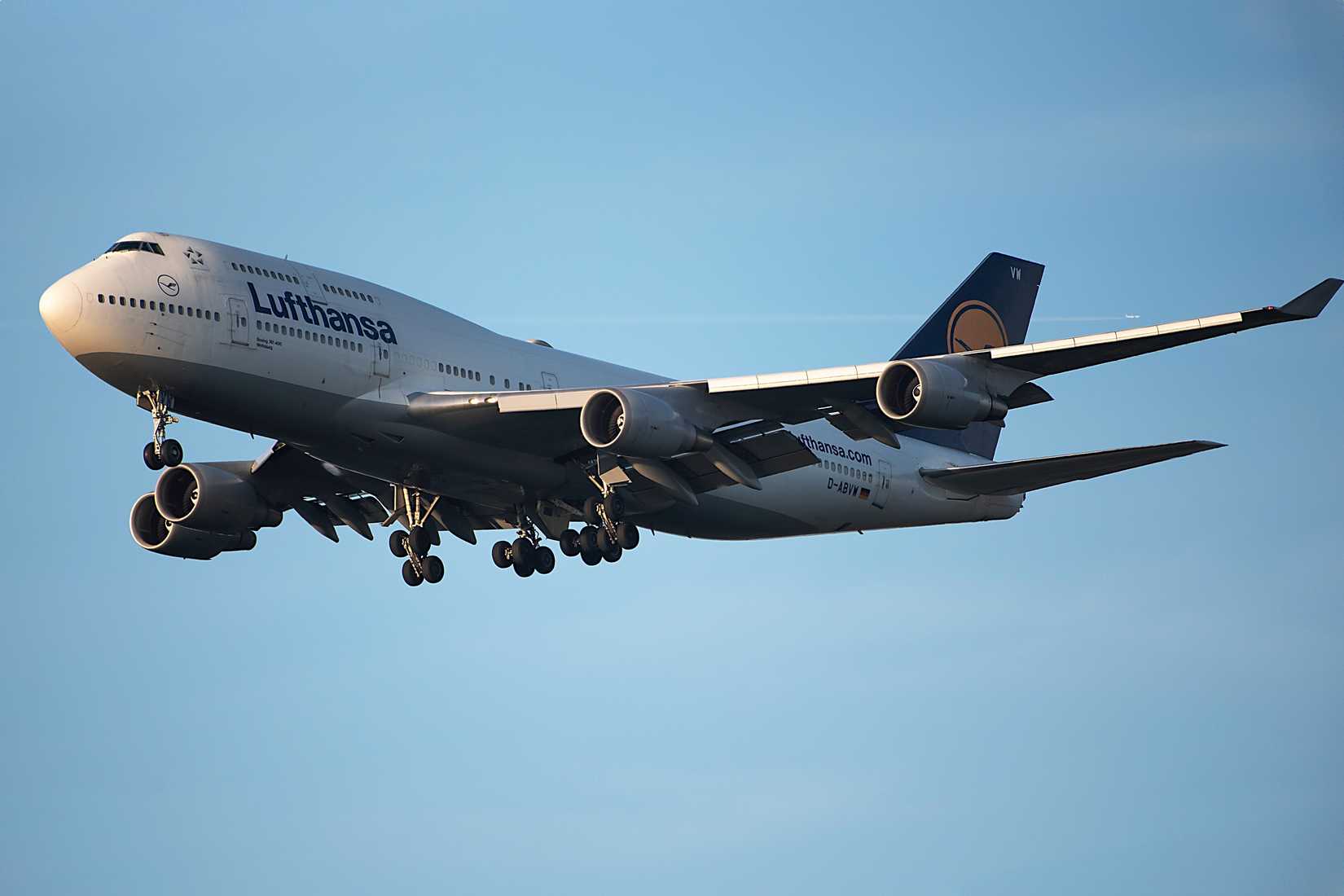
The Boeing 747 family of Jumbos proved to be a very popular ultra-large widebody freighter. Most of the 747s still flying today are freighter variants or freighter conversions from passenger aircraft. Only a few disappearing Boeing 747-400 passenger jets remain in service (mostly with Lufthansa). The vast majority of the over 150 orders Boeing received for its final modernized Boeing 747-8 variant were for purpose-built freighters.
The final Boeing 747-400 freighter was delivered in 2009, meaning the youngest aircraft are now around 15 years old. These aircraft benefit from being paid off, but they are incredibly thirsty in terms of fuel use. While fuel efficiency is not the same pressing concern for freighters as it is for commercial passenger airlines, the amount of fuel is becoming a major problem. The Boeing 747-8 is much more fuel efficient than the 747-400. This article will focus on the economics driving the -400 as a freighter. Here is what to know about the cost of operating a Boeing 747-400 freighter in 2025.
The Boeing 747-400ERF Is Thirsty
While it typically makes sense for cargo airlines to operate older, paid-off aircraft with increased fuel consumption as a compromise, this is becoming too much for the 747-400F. The -400f is fuel hungry, and jet fuel is its largest single operating cost. Comparisons with the upcoming modern widebody freighters intended to replace it, the A350F and 777-8F, are tricky due to selective marketing by the aircraft manufacturers and because they are different-sized aircraft with differing capabilities.
With that said, the next-generation A350F and 777-8F typically burn around half to two-thirds the fuel of a 747-400F on a comparable mission. Airbus also claims its A350F offers 20% lower fuel burn than the older 777F still in production and is more efficient than Boeing’s upcoming 777-8F. Boeing says its 777-8F is to be the most fuel-efficient.
Both aircraft will be two generations ahead of the 777-400F in fuel efficiency. Airbus says the lightweight A350F will have around 40% less fuel burn and 40% lower CO2 emissions compared to the quad-engined Boeing 747-400F. It should be highlighted that the cost of fuel is volatile. Costs were lower in 2025 compared with 2024, making the 747-400F less expensive this year. However, the massive jet will be more susceptible to fuel price shocks in the future.
Growing Maintenance Expenses
Boeing 747-400 freighters (48) make up more than half of Atlas Air’s fleet (86) and are now on average over 25 years old. As the world’s fleet of 747-400 freighters ages, their maintenance burdens increase. These cost much more to maintain than modern twin-engined widebodies. Having four engines, they are more complex, and quad-jets typically have a lower dispatch rate than twinjets.
Maintenance expenses are significant and typically account for a large fraction of the aircraft’s non-fuel operating costs. A Boeing 747 D-check is estimated to cost between $4 million and $8 million, depending on the scope. A modern twinjet comes with half the number of engines, reducing the costs. They are also newer, have longer LLR lifespans for modern engines, and typically offer simpler logistics.
Not only does an airline pay higher maintenance fees for aging -400s, but also has to put up with them being grounded for more time than modern aircraft. These considerable costs can be eased by operating large fleets to achieve logistical economies of scale. This is a big reason why airlines holding onto them (like Atlas Air) also have large fleets (65 Jumbos, including 747-8 variant), while airlines wanting to replace them have smaller fleets (like Singapore Airlines with seven 747s, all freighter -400s). Lufthansa benefits from a large fleet, and Lufthansa Technik also maintains other airlines’ Jumbo fleets.
Benefit Of Being Paid Off
Perhaps the greatest benefit of operating the 747-400 (and any old aircraft) is that it is either already paid off or is comparatively cheap to lease. Many airlines operating the 747-400 will own the jets and have them paid off. Lease rates for these old aircraft vary, but have been reported somewhere above $100,000 a month. This may be an order of magnitude lower than next-generation freighters.
By comparison, in September 2024, IBA stated that new Boeing 787-9s have long-term lease rate around $1.05 million a month, and the A350-900’s monthly lease rate is around $1.14 million a month. It is unclear what the Boeing 777-8F’s lease rate will be, but given that the aircraft is not expected to debut until 2028, and is larger than the 787-9, its monthly lease rate will likely be considerably higher. The same is true of the A350F, which is not expected until 2027 and is based on the larger A350-1000.
|
Boeing 747-400 |
|
|---|---|
|
Number of 747-400s built |
674 |
|
Number 747-400s remain in service |
Approx. 174 (per ch-aviation) |
|
Passenger operators |
Lufthansa, Korean Air, Rossiya Airlines (Air China phasing out) |
|
Primary role in 2023 |
Freighter |
A typical widebody freighter on trunk routes can be expected to fly 2,500 block hours. Assuming fuel costs around $677 a tonne, the annual fuel savings of these new generations of freighters should be in the ballpark of $7 million annually. However, their annual lease will exceed $12 million, while the 747-400F may cost considerably more than $1 million annually. These numbers vary and are very approximate. They are heavily influenced by the cost of fuel and the ability of Airbus and Boeing to meet demand for new jets.
Other Factors Influencing The Boeing 747-400ERF’s Economics
One major factor in the 747-400ERF’s favor is that it is a much larger aircraft than the Boeing 777-8F or A350F, and so there are some niche roles that it will be able to fill that the others can’t. This is why there was some demand for the one-off An-225 Mriya and why outsized cargo aircraft like the modified -400 Dreamliners and the modified A330 BelugaXLs exist.
Another factor is ACMI leasing, also known as wet/damp leasing. This is an agreement between two airlines under which one provides the other with an aircraft crew, maintenance, and insurance for a fee. These agreements can be reached on comparatively short notice and for shorter time periods. The lack of high capital and lease commitments for the older 747-400s can make sense for short seasonal peaks.
While the new ICAO regulations set for the end of 2027 affect new-build aircraft, like the 767 freighter, tightening regulations are also making the environment more difficult for the 747-400. Airlines are committing to net-zero, while SAF mandates are also problematic for the aircraft. Israel’s Ben Gurion Airport banned four civilian-engine aircraft due to noise and pollution. Amsterdam Airport Schiphol is introducing regulations. Among the measures is a 23:00-07:00 curfew on the ‘loudest’ aircraft that includes the 747-400.
No Replacements For The Boeing 747-400ERF
While there are (smaller) replacements in the pipeline for the Boeing 747-400ERF, there are few aircraft to replace them currently. Boeing has likely received the final orders for its existing Boeing 767-300F and Boeing 777F, and it needs to get these programs completed by 2027 due to new ICAO regulations set to kick in on January 1, 2028, that will prohibit new sales of these older, less-efficient jets.
The Boeing 777-8F will not be available until 2028, and the A350F until 2027. Until then, airlines like Singapore Airlines have little to no choice but to accept high fuel and maintenance costs and continue operating their aging -400s. There is the option of passenger to freighter conversions, but here, too, is another issue.
The overall delay of the 777X program (now 2027), Boeing’s low-rate production of 787s, and Airbus’s low production rate of A350s mean airlines need to hold onto their passenger widebody airliners for longer to avoid a capacity gap. Korean Air is itching to rid itself of its older 777s, A380s, and passenger 747s, but it can’t until enough 777-9, 787, and A350 replacements arrive.
Boeing 747-400ERFs To Keep Flying Until Mid-2030s
The Boeing 747-400ERF is becoming expensive to maintain and is extremely expensive in fuel and is very susceptible to fuel price shocks. However, it benefits from being either paid off or cheap to lease. For some cargo airlines, the trade-off means the Boeing 747-400ERF remains profitable, but for others (like Singapore Airlines), it’s high time to get rid of the 747 entirely.
Boeing 747-400 freighters continue to operate in large numbers, but they are being gradually phased out. They are likely to continue serving in dwindling numbers until around 2035. The large number of jets means retiring airframes can be cut up and their parts repurposed to keep other 747-400s flying. Aircraft cannibalization becomes common after production lines cease, and it becomes difficult to source new parts.
An expanding list of airports is imposing restrictions (like nighttime curfews) on older aircraft like the 747-400 or otherwise outright banning them. The 747-400 is restricted at Amsterdam, Tel Aviv, London (including Heathrow, Gatwick, Stanstead), Frankfurt, Zurich, and other airports. The economics of how long it’s sensible to operate the 747-400 is a combination of factors like regulations, suitable aircraft replacements, available spare parts, and sustained high fuel prices.
link










